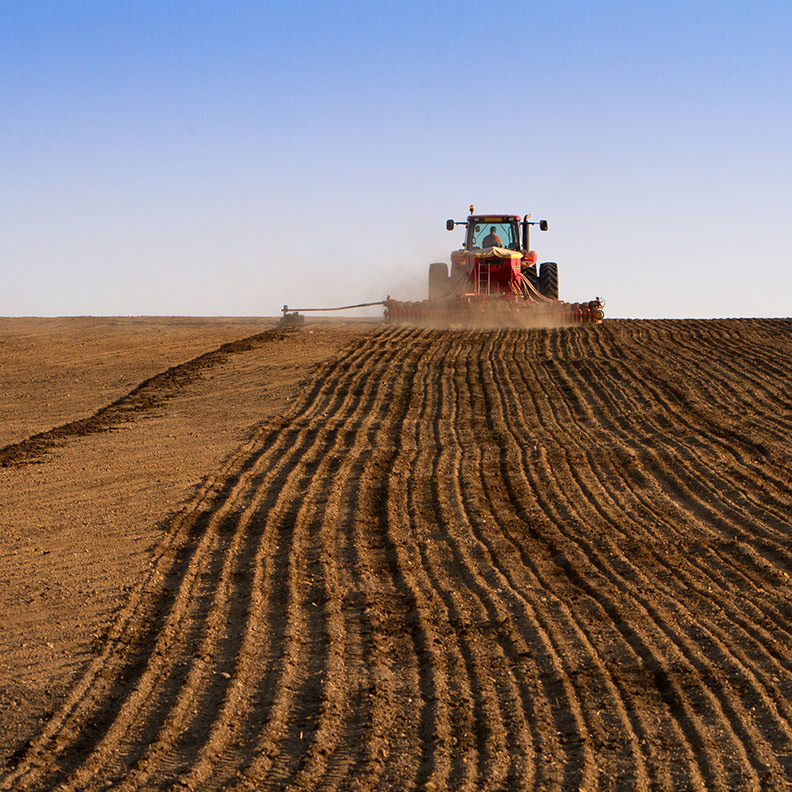With spring planting season fast approaching, U.S. farmers are anxiously awaiting the establishment of crop insurance base prices for corn and soybeans to wrap up at the end of the month. Base prices are trending close to 2022 figures as of mid-February, when prices were $5.90 per bushel for corn and $14.33 per bushel for soybeans.
Crop input prices are still relatively high with certain variable costs like labor increasing parallel to inflation. Farmers are finally seeing some relief in fertilizer prices, although it might be too late for this season as most farmers have already priced their 2023 inputs. Liquid fertilizer UAN28 decreased 11% month-to-month and is at its lowest price since October 2021, according to DTN1.
Final budget adjustments, crop insurance review and decisions, operating line of credit renewals, and preparations for calving season are among some of the final decisions left for farmers and ranchers to make before warmer weather arrives and planting begins.
U.S. row crops
December corn futures are down 2.1%, starting the year off hovering slightly under $6 per bushel, while soybeans are down 1% and slightly under $14 per bushel.
Fertilizer prices are decreasing year-over-year as well, according to DTN:
DAP down 3%
MAP down 8%
Potash down 13%
Anhydrous down 18%
Urea down 23%
Meanwhile, farmland values across the U.S. continue to increase. Actual increases vary from county to county, but the Creighton University farmland price index is at 63.5 this month2, marking the 29th straight month above a growth-neutral value of 50.0.
U.S. livestock and dairy
U.S. dairy slaughter is 7% higher year-over-year, but herds are still large and production is outpacing demand in the short term.
African Swine Fever, or ASF, is still not a major issue in the U.S. for hogs and export demand is increasing. Mexico imported 10% more U.S. pork in 2022 than in 2021, going over $2 billion in imports for the first time.
On the other hand, avian influenza or bird flu is still a problem throughout the world, causing issues in the poultry supply chain, most notably with eggs. Sixty countries have had an outbreak of H5N1 and nearly one-third of the U.S. flock of laying hens died or have been slaughtered to prevent the disease from spreading thus far, according to the USDA.
Local ag outlooks
Madison Sundsbak, Ag Banker, Minot, ND
“As of now, commodity prices look strong and should allow for another successful year in 2023. Hopefully farmers can take advantage of these prices early and make strong marketing decisions.
“It’s no secret that interest rates are the biggest concern among farmers in 2023. However, everyone is hopeful inflation will decrease later in 2023.”
Ryan Palm, Ag Banker, Crookston, MN
“2023 carries a positive outlook — small grain futures prices are relatively strong. For the sugar beet growers in the Red River Valley, sugar prices on the futures market are near a 10-year high at $21.360. This is a very positive sign.
“The biggest concern for the 2023 crop year is the area subsoil moisture levels. Soil moisture in our area is extremely dry. Talking with a local agronomist, he stated that there is very little to no subsoil moisture to speak of. We need to have a slow spring thaw and some rain before planting season. Also, there will need to be timely rains throughout June, July and early August for our crops to hit actual production history (APH) levels or greater.”
Ryan Grobe, Ag Banker, St. Charles, MN
“Extremely profitable margins with the run up in grain markets in 2022 have helped farmers improve their balance sheets, especially in their working capital (liquidity) position. This will help them be able to weather tighter margins heading into the 2023 year. Equipment availability has become more favorable as well, as the supply and demand issue resulting from COVID-19 has seemed to iron itself out.
“Rising interest rates plus increased input costs will cause margins to not be as great heading into 2023. Understanding break-even prices and marketing effectively will help mitigate this risk.”
Global agriculture
In Ukraine, input prices are very high, including transportation and fertilizer, if it can even be sourced. As a result, as much as 47% less nitrogen will be used, which will equate to a 20% to 50% decrease in yields throughout the country, according to Antonina Broyaka, an extension associate in agricultural economics at Kansas State University3. Winter wheat acres were down 39% year-over-year.
In South America, Brazil is estimated to overtake the U.S. as the largest corn exporter in the world to go alongside being the largest soybean exporter. The USDA estimates Brazil will export 50 million metric tons (mmt) of corn in 2022-23 and the U.S. is estimated to export 48.9mmt. Increased acreage in Brazil is the primary reason behind the expected rise in exports.
Cool weather is helping corn pollination in Argentina and causing a slow soybean harvest in Brazil, as soybeans are not mature yet. In turn, this causes the planting of the second crop corn, safrinha, to be delayed and heightens the risk of yield loss due to dry weather, which is common at the tail end of the safrinha crop season.
South American soybeans will hit the global market soon, but U.S. prices will benefit from any continued unfavorable weather as well as any logistic delays, such as trucking strikes or road condition issues.
What to watch for
The USDA’s next prospective plantings report4 is due to be released on March 31, which should provide insight on the breakdown of U.S. crop acres and provide direction for futures markets throughout planting season.
Congressional ag committees are also starting to work on the next farm bill, which is estimated to be the largest ever at $1.5 trillion, according to the Congressional Budget Office. The bill is expected to address soil health and farm operation resiliency along with the Supplemental Nutrition Assistance Program (SNAP).

